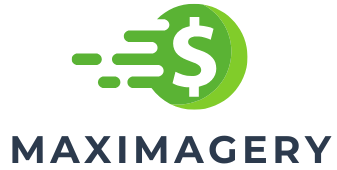Table of Contents
ToggleHigh-income earners have a unique way of making money. With great income often comes great responsibility… and hefty tax bills. But fear not: there are plenty of strategies to keep more of your hard-earned cash in your pocket and away from the IRS. Let’s jump into some clever ways to save on taxes without giving up that extravagant latte habit. Whether you’re a CEO or a well-compensated coder, there’s something here for everyone looking to minimize tax liabilities while maximizing their wealth.
Understanding Tax Brackets and Rates

The first step in any tax-saving strategy starts with a solid grasp of tax brackets. Essentially, these brackets determine how much tax a person owes based on their income level. For high-income earners, these rates can climb higher than a mountain goat in search of dinner.
As of recent tax reforms, the highest federal tax bracket hovers around 37% for those earning over $539,900. Understanding where your income lands within these ranges is crucial because it can affect not just how much you owe, but how you might strategically adjust your income to lower your tax burden.
For example, deferring some income to the following year might keep you in a lower tax bracket, like never letting the dog eat the last piece of steak.
Consider consulting a financial advisor to gain insights into how your income is structured and to identify any potential opportunities for savings.
Maximizing Retirement Contributions
Retirement might feel a million years away until it’s suddenly right around the corner. One of the scariest parts of being a high-income earner is that the IRS has cleverly set limits on how much can be contributed to tax-advantaged retirement accounts, and guess what? They often give you a break for playing the long game.
Maxing out contributions to accounts like 401(k)s, IRAs, or even a 457 plan can significantly reduce taxable income. For 2023, employees can contribute up to $22,500 to 401(k) plans. If you’re over 50, there’s an extra catch-up contribution that allows you to chip in even more. Who says saving for retirement can’t be a part of your tax strategy?
Another option for high earners is a SEP IRA or Solo 401(k) if self-employed. The contribution limits are higher than traditional options, offering even more tax savings. So go ahead, boost that retirement fund and watch as your taxable income drops.
Utilizing Health Savings Accounts (HSAs)
Health savings accounts, often affectionately referred to as HSAs, are a tax-smart tool that should be in every high-income earner’s toolkit. These accounts let individuals save pre-tax dollars for medical expenses. Win-win.
For 2023, individuals can contribute up to $3,850, while families can set aside $7,750. Not only does money contributed to an HSA reduce taxable income, but any funds used for qualified medical expenses can be withdrawn tax-free. It’s like getting an extra slice of the fiscal pie, guilt-free.
And let’s not forget about the triple tax advantage here: contributions are tax-deductible, earnings grow tax-deferred, and withdrawals for qualified medical expenses are tax-free. It’s like finding the holy grail of tax saving.
Exploring Tax-Deductible Expenses
High-income earners often have a myriad of deductible expenses, if they know where to look. From business expenses related to self-employment to things like mortgage interest and property taxes, deductibles can add up.
For instance, if someone operates a side business, almost all expenses directly related to that business could be deductible. Suppose they’ve created a home office in the garage (sorry, bikes). In that case, a portion of home expenses like utilities, internet, and even a part of the property tax could become deductible. Isn’t it nice to know that all those hours hustling on Etsy have some perks?
Keep a meticulous record. The IRS loves documentation more than a cat loves sunbeams. It’s essential to have details that can substantiate any deductions during tax time.
Investing in Tax-Advantaged Accounts
Apart from retirement accounts, other investment vehicles can help high-income earners save on taxes. Consider options like 529 plans for education savings.
Contributions are made with after-tax dollars, but those funds grow tax-free when used for qualified educational expenses. This is especially advantageous for parents planning for their children’s college futures.
Also, individuals can explore municipal bonds, which yield tax-free interest income. Even investment in index funds can be strategically scheduled to minimize capital gains tax. Think of it as ballet with numbers, a delicate dance that, when performed correctly, can lead to tax advantages.
Taking Advantage of Tax Credits
Tax credits can be a lifesaver in terms of reducing a tax burden. Unlike deductions, which only reduce the taxable income, credits reduce the tax owed. For high-income earners, this could mean the difference between a payment plan and a joyous tax return.
Eligible credits like the Lifetime Learning Credit or the American Opportunity Tax Credit can offer significant tax savings for education-related expenses. Finding these can feel like searching for a needle in a haystack, but the rewards can be well worth the effort.
Also, many states offer tax credits for energy-efficient home improvements, which not only lessen the tax burden but also contribute to a more sustainable lifestyle. Be on the lookout for these opportunities because they are essentially money left on the table for those willing to search.
Planning for Capital Gains and Losses
Capital gains taxes can be a thorn in the side of high-income earners, especially when selling off investments. But, savvy planning can turn that thorn into a bouquet of tax savings.
Timing is everything in the world of investments. By holding onto assets for over a year, investors can qualify for the long-term capital gains rate, which is significantly lower than short-term rates. It’s a classic case of patience paying off.
Conversely, it can sometimes be beneficial to sell underperforming stocks at a loss to offset gains from other investments. This strategy is known as tax-loss harvesting and it’s a common practice among savvy investors. Remember to keep the wash-sale rule in mind while executing this strategy.





